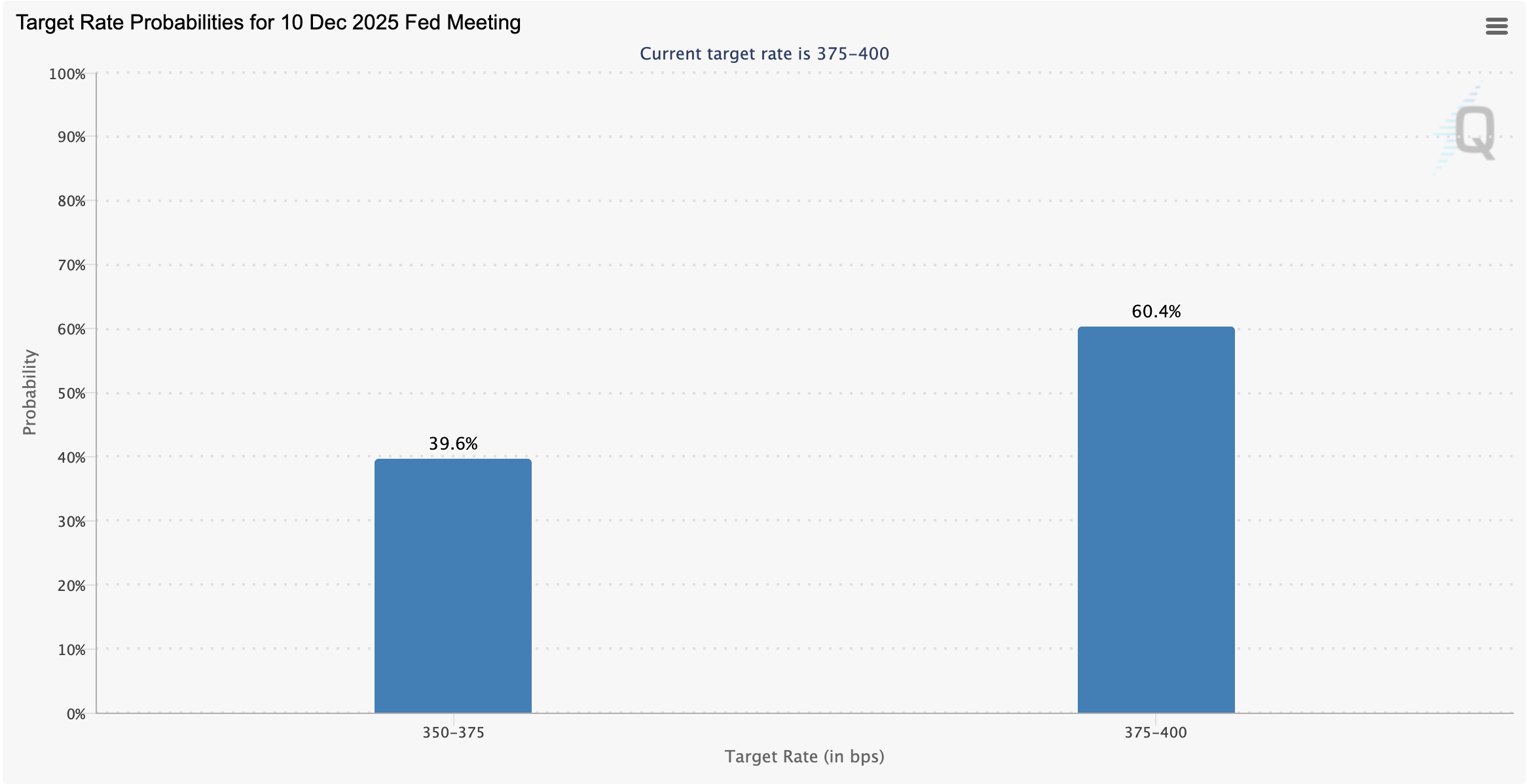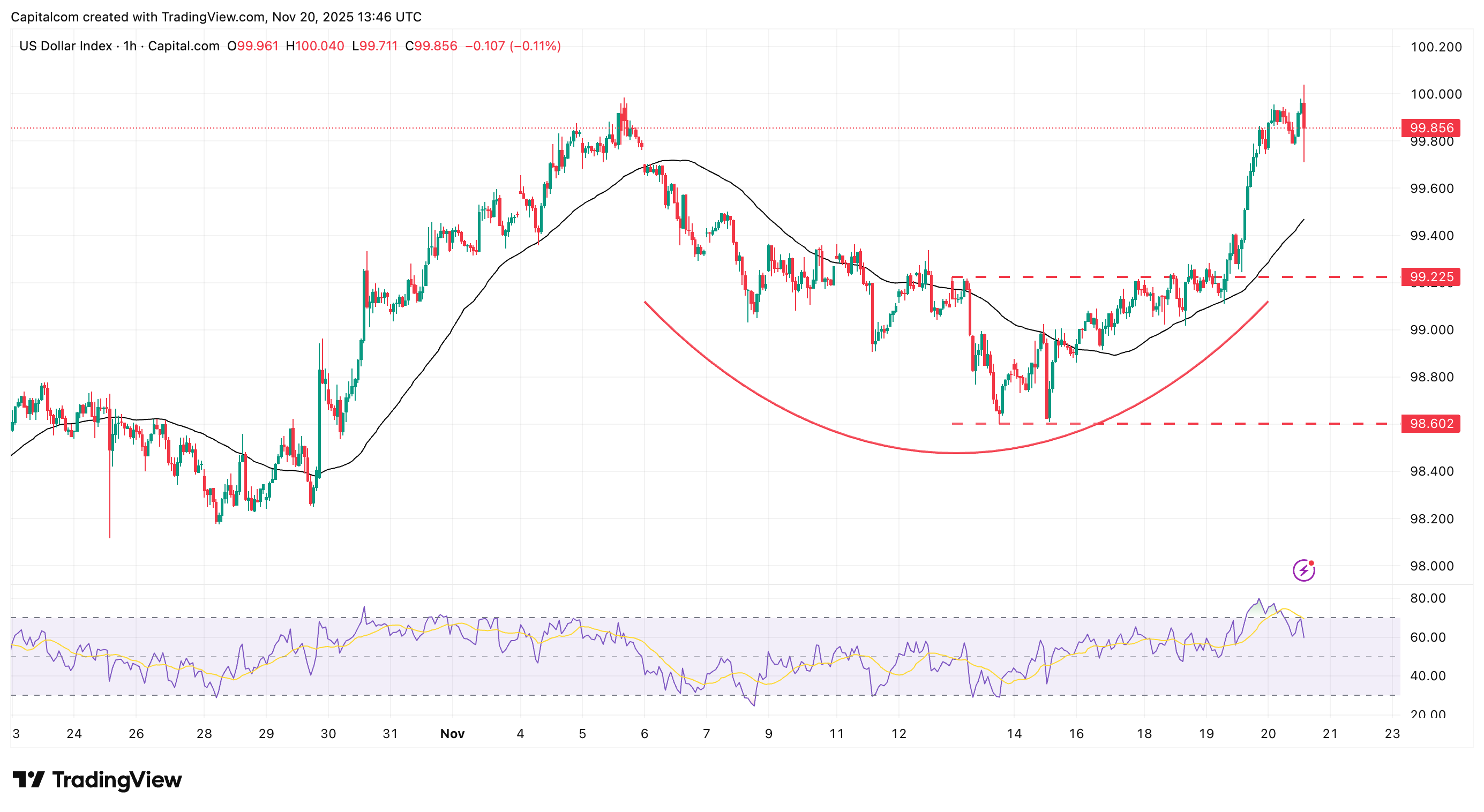US Dollar dips as odds of a rate cut increase despite strong jobs data
The delayed September US jobs data shows a picture of resilience, but markets increase the odds of a rate cut in December
After NVIDIA’s star performance last night, which delivered – unsurprisingly – another strong quarter of results, markets had their sights focused on the delayed September jobs data to further determine the current appetite for risk. Overall, the takeaway from the data is pretty solid. Wages ticked up higher as did private and government payrolls, and even though the unemployment rate did rise slightly to 4.4%, so did the participation rate. The stronger than expected non-farm payrolls at 119 thousand is likely to grab a few headlines as it suggests the labour market remains far from recessionary territory.
Average hourly earnings grew 3.8% year-on-year, matching last month’s pace and underscoring that wage growth is holding steady. This combination — solid job gains and stable pay growth — complicates the Federal Reserve’s task: it shows that labour demand remains firm, even as the Fed seeks clearer signs of cooling before committing to rate cuts. Interestingly, the initial reaction saw markets pricing in a higher chance of a cut (rising from 22% to 40%) likely focusing on the unexpected rise in the unemployment rate. As a result, the dollar pared back some of its daily gains, as did yields, whilst the stock market took it as another sign to build on yesterday’s reversal.

However, this momentum may fizzle out quickly as the data is digested further, with the potential for a continuation in the dollar rebound as markets reassess the rate cut odds. It is also likely that the data is considered old news, and given little thought beyond this initial reaction, depending on whether Fed officials dwell on it or not.
US dollar index (DXY) 1-hour chart

Past performance is not a reliable indicator of future results.